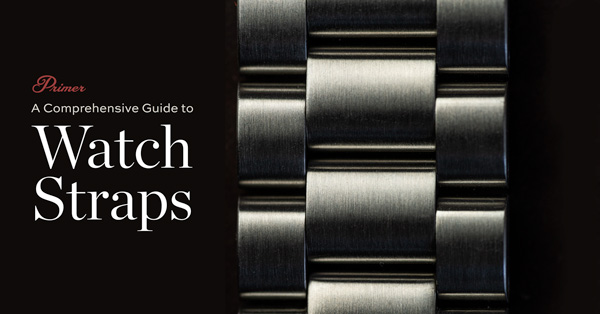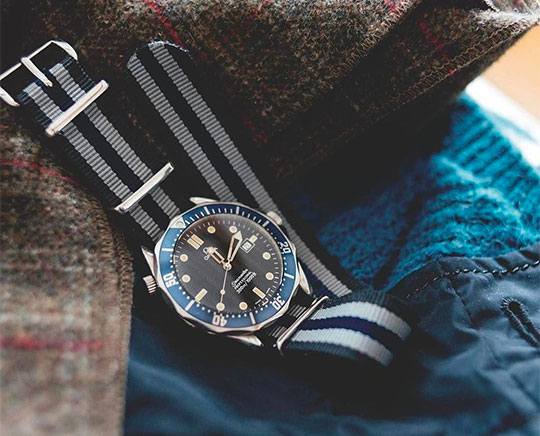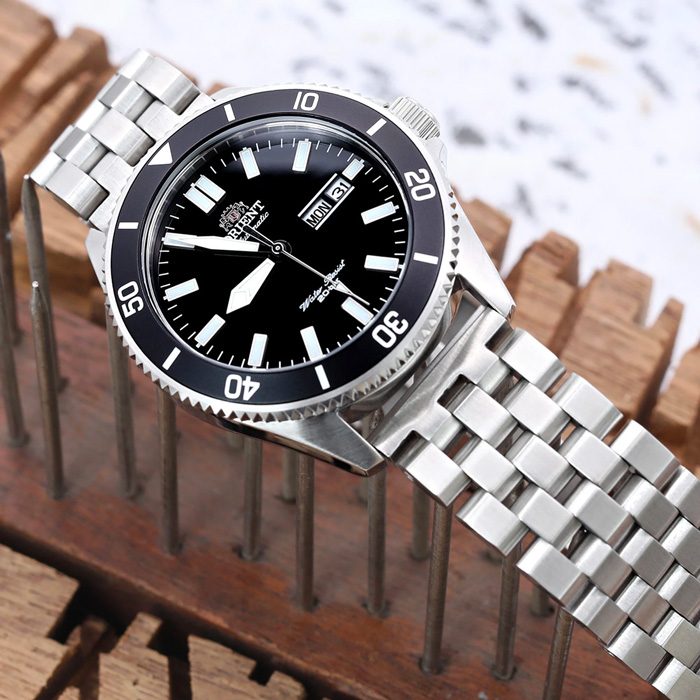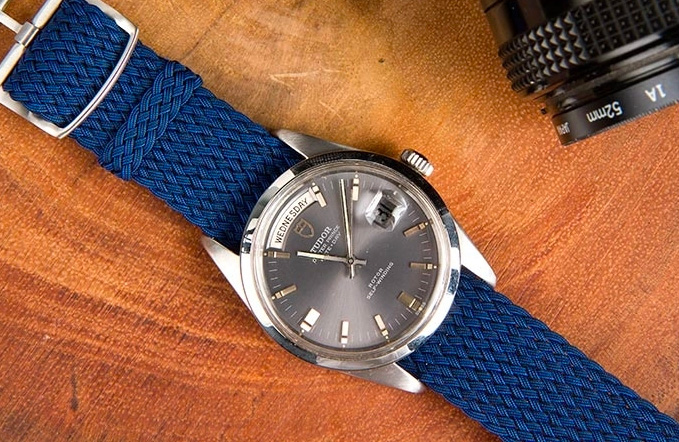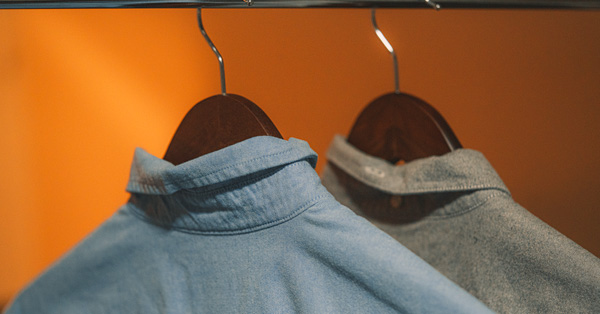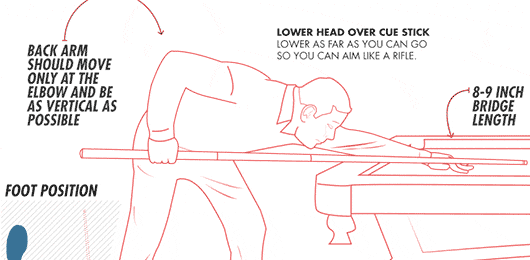A proper strap is an essential companion to any watch, and switching it out is an easy way to experiment with a whole new style. A broad and diverse strap collection can greatly extend the number of combinations available to you; to an observer, the band is often more visible than the face of the watch, so a large assortment of straps will make a small collection of watches appear truly enormous.
By their very nature, watch straps are often considerably cheaper than an entirely new watch, so it is often more cost-effective to expand one’s collection of straps over splurging on another watch. That’s not to say one shouldn’t own an assortment of watches – just make sure you don’t neglect that which connects them to your wrist.
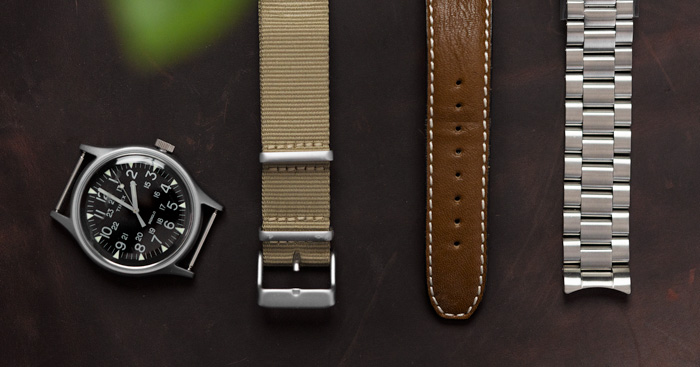
There is an absolutely humungous amount of watch straps available to you, and I will do my best to document the best watch straps here. Each strap has a fascinating history, so if one of them jumps out at you, the accompanying text will surely be an interesting read. Finally, be sure to check out the lists of available retailers; they should help you find exactly what you’re looking for, regardless of your price range. Don’t be afraid to spend a bit extra to get exactly what you want!
Without further ado, let’s get started!
Revised and expanded Fall 2023.
What is the Difference Between Watch Bands, Watch Straps, and Watch Bracelets?
In the world of horology, the terms used to describe the part of a watch that wraps around the wrist—watch bands, watch straps, and watch bracelets—can seem interchangeable. Yet, there are subtle distinctions that define each of these terms.
Watch Bands
Watch bands encompass a broad category that includes both metal and non-metal attachments. Essentially, a watch band can be made of any material, whether it's leather, metal, fabric, or rubber. It's a generic term that often refers to the entire spectrum of wrist attachments.
Watch Straps
Watch straps specifically refer to non-metal bands made from materials like leather, nylon, or rubber. These straps offer a casual and often customizable appeal, with options like the sporty NATO strap or the elegant leather strap. They are favored for their comfort and versatility, allowing wearers to switch between different looks.
Watch Bracelets
Watch bracelets are a subset of watch bands, crafted exclusively from metal. Whether it's stainless steel, titanium, or gold, watch bracelets provide a sophisticated and durable option. Designs like the Oyster and Jubilee are classic examples of metal bracelets that have become synonymous with luxury and style.
The Blending of Terms
While these distinctions exist, it's common to find these terms used interchangeably, especially in casual conversation or online retail. The nuances are often more recognized by watch enthusiasts and collectors who appreciate the subtle differences in material and design.
In the end, whether it's a band, strap, or bracelet, the choice often comes down to personal style, comfort, and the occasion for which the watch is worn. Understanding these terms adds a layer of insight for those looking to explore the diverse world of watch accessories, allowing for a more informed and tailored selection.
How to Measure a Watch Band
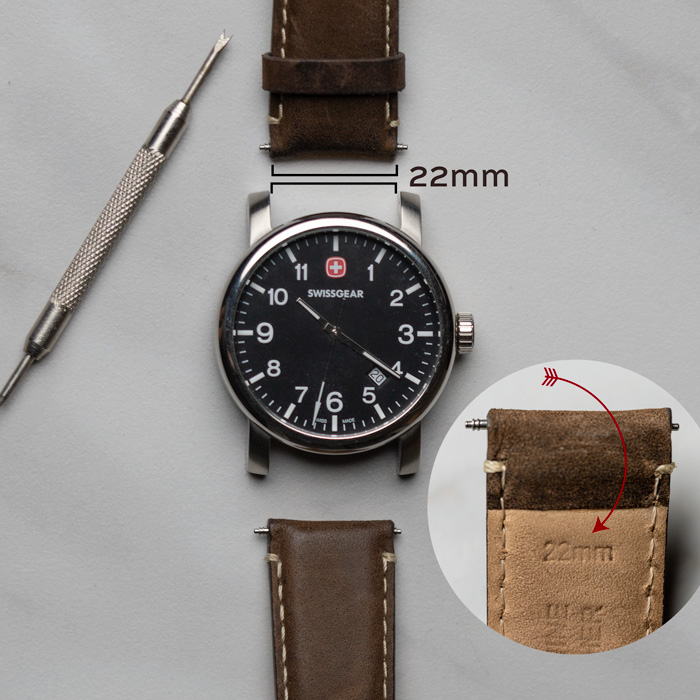
Watch bands are sold in sizes measured in millimeters based on the interior width of the watch lugs. If you'r lucky, the size may be printed on the back of the current watch strap.
To measure, use a metric ruler or a free printable template like this one to find the distance between the lugs of the watch case or the spring bar end of the current strap. Do not include the spring bar in the measurement. As a refresher, there are 10 millimeters in a centimeter.
The Evolution of Watch Straps: A Timeline
The journey of watch straps is a fascinating tale, interwoven with history, fashion, functionality, and innovation. Here's a glimpse into the key milestones that shaped the world of watch straps:
- Straps in the Late 1800s: In the rugged terrains and disciplined routines of military life, soldiers began wearing pocket watches on their wrists with leather straps known as “trench watches”. A practical solution that marked the humble beginnings of a trend.
- Women's Fashion in the Early 1900s: Watches transcended mere timekeeping as women started treating wristwatches like jewelry, attaching them with ornate metal chains and bracelets. A fusion of elegance and functionality was born.
- Wristwatches Become Fashionable: The fashionable wave reached the shores of the United States, and in 1912, The New York Times reported the burgeoning trend of wristwatches among working women and leisurely socialites alike.
- World War I Influence: The trenches of WWI further propelled the trend, as soldiers relied on wristwatches, replacing delicate chains with rugged leather straps, turning a fashion statement into a symbol of utility and resilience.
- Luxury Wristwatches: From soldiers to celebrities, wristwatches evolved with initially produced leather straps, but soon metal bracelets like the Oyster, President, and Jubilee by Rolex became iconic, synonymous with luxury and prestige.
- Casual and Durable Options: As times changed, so did the straps. Rubber straps and nylon NATO straps were introduced for specific functions, also offering casual and durable options for everyday wear.
- Changing Straps: A trend emerged, changing straps became more than a necessity; it became a way to enhance appearance, functionality, and even breathe new life into old timepieces.
- Modern Watch Customization: Today, changing the strap is an easy way to update a watch's look. Whether a DIY home adjustment with spring bar connections or professional assistance for integrated metal bands, the possibilities are as varied as the straps themselves.
This historical panorama sets the stage for understanding the multitude of strap options available today, from the classic NATO to the avant-garde Milanese. The watch strap, once a mere practical accessory, has become a canvas for style, identity, and a reflection of the times.
Watch Strap Types
Table of Contents Click on each to jump to its section
NATO Strap
Originally developed for British Army soldiers in the 1970s, the NATO strap originally debuted under the name “G10”, a title taken from the form for requisition. Although similar styles can be traced back to World War II, this was the first appearance of the strap under its contemporary title.
It quickly grew in popularity throughout the military, and over time, the general public gradually began to appreciate the strap for its numerous features and abilities. When the Cold War ended, G10 straps were sold in military surplus shops around the country, and they were all branded with a unique NATO Surplus Number. Surplus stores sold out quickly, but watch strap retailers sprung up to take advantage of the surge in popularity. The veritable storm of NATO straps never quite ended, and they are sure to remain popular for decades to come.
The most notable feature of a NATO strap is its single-piece construction; most other straps are composed of two separate pieces, and can only be applied by removing both of the spring bars that attach to the watch. Switching out straps is normally a time consuming process, but NATO straps are simply woven underneath the spring bars, so they can be removed or applied in a matter of seconds.
Finally, the addition of a watch keeper strap ensures that the watch case will remain firmly on your wrist even if one of the spring bars snaps. James Bond has famously worn NATO straps across films and actors. All of these characteristics make NATO straps an excellent choice for nearly any situation, and their low price is a boon to those on a budget.
Retailers:
- Nato Strap Co. – $17
- Crown & Buckle – $34
- Timefactors – $12
- Hodinkee – $30
- GLC Straps – $82
- Phoenix – $16
- Atelier du Bracelet Parisien (alternative) – $38
- Bulang & Sons – $42
- Suigeneric – $30
- Triwa – $65
- The Strap Smith – $200
- Bas & Lokes – $109
One Piece Slip-Thru & Zulu
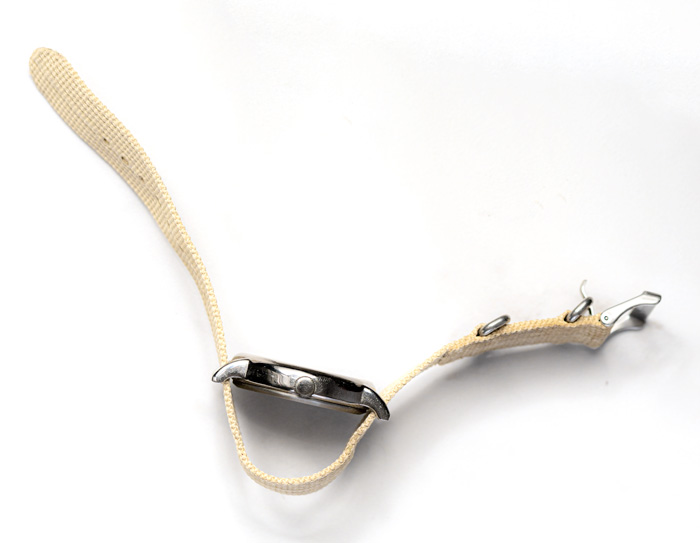
Trademarked by Maratac, Zulu straps have surprisingly little background for such an interesting name. Although obviously inspired by NATO straps, there are a few minor differences that separate the two. Firstly, they are composed of thicker materials, be it nylon or leather. This slightly increases their strength and durability, but they also might not fit between the spring bars of some watches. Secondly, Zulu straps have larger, more rounded hardware to accommodate their increased girth.
In contrast, NATO straps have small, squared-off buckles and rings that better suit its reduced volume. Finally, the watch keeper strap is an optional inclusion on Zulu watch bands, so they are available in both 3- and 5-ring configurations. Either way, there is almost no aesthetic impact, so just go with whatever you find to be the most comfortable.
Thinner straps more akin to a NATO but without the keeper strap are also commonly found labeled as one piece or slip-thru, such as the Timex in the photo above.
What's the difference between a NATO strap and a Zulu strap?
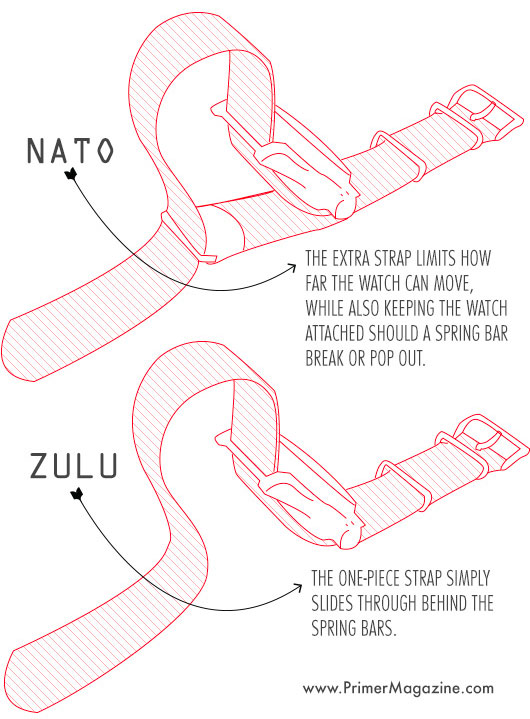
The generally larger dimensions Zulu straps make them especially good for large watches, since the face is more comparable to the hardware in terms of size. Conversely, NATO straps are excellent for small watches; the thinner material is more likely to fit through the spring bars, and they have a more proportionate appearance. Zulu straps also take a bit longer to break in, but at the same time, they will most likely last longer than a NATO.
In the end, it comes down to personal preference – some people can’t handle the extra bulk a Zulu provides, but others find NATO straps to be too flimsy. I recommend picking up one of each type and deciding which you prefer in-person!
Retailers:
- Amazon
- Timefactors – $13
- Crown & Buckle – $34
- Maratac – $17
- Greg Stevens Design – $20
- The Strap Smith – $35
- Da Luca – $30
- Worn & Wound – $48
- Rover Haven – $99
Rally
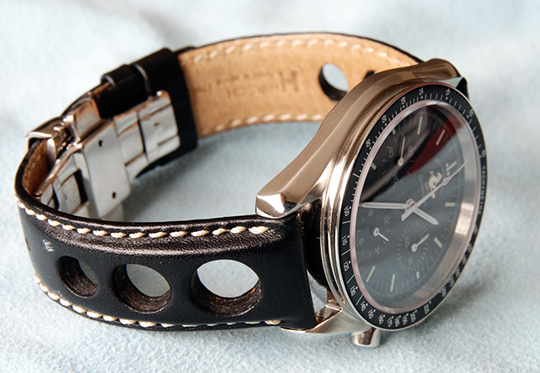
Inspired by old school racing gloves, Rally straps can be easily recognized by the three or more large perforations punched out below the lugs. Automotive racing is primarily a test of speed, and weight plays directly into the maximum achievable velocity – as such, many early race cars were constructed of parts with holes drilled through them. This decreased the overall weight, so just about everything made of metal was perforated to some extent. To remain aesthetically consistent, driving gloves (and later, rally straps) were perforated, too.
Some might argue that the perforations existed primarily for ventilation and breathability, but it’s difficult to tell the true reason. Race cars are notoriously warm, and perforations helped to reduce both heat and weight, so it could have been either one!
Regardless of their origin, Rally straps are a great choice for summer wear. Even if it wasn’t the original intention, the perforations do substantially increase ventilation, which can be useful in the summer heat. Furthermore, there’s no better choice of strap to pair with a vintage chronograph, since they were frequently used to time races. If the style or history of the Rally strap appeals to you, I highly recommend picking one up.
Retailers:
- Amazon
- Straps Co – $35
- Crown & Buckle – $34
- StrappedForTime – $61
- Panatime – $25
- BandRBands – $70
- Hirsch – $61
- Heuerville – $108
Oyster
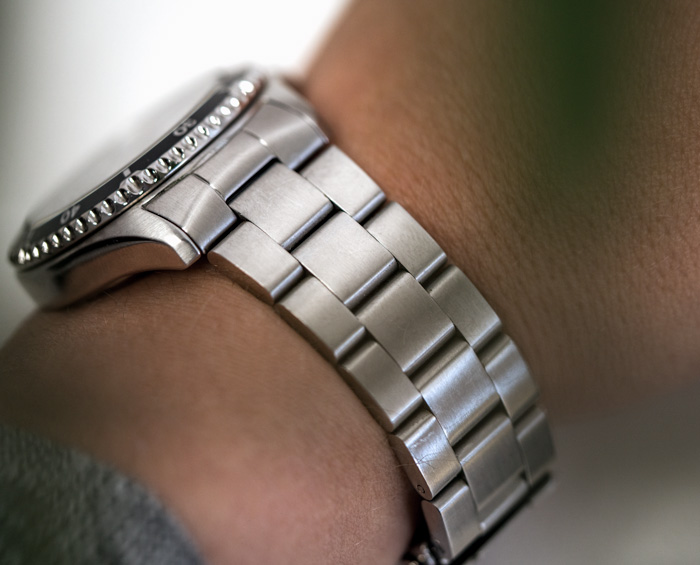
Introduced by Rolex in the 1930’s, the Oyster bracelet is an absolute classic in every sense of the word. The Oyster is characterized by its long and thick three-piece link design, and is by far the most popular bracelet model available. It has premiered on nearly every Rolex model to date, and has gained a massive following as a result.
While its storied history is one reason for its success, many people swear by it for its sheer functionality. The wide center bar makes each link strong and less prone to stretching, so the bracelet is exceedingly durable. Furthermore, the relatively small number of links reduces the number of possible break points. This does come at a cost, however; the reduced number of swivel points makes the strap feel a bit stiff in comparison to other bracelets.
Aside from this minor problem, the Oyster bracelet is a great choice for nearly any watch. The hefty links are often more proportionate on a large watch, but it looks great on a smaller one, too. The Oyster has a vast and interesting history, and it’s not going anywhere anytime soon. If you’re interested in experimenting with bracelets, this is a great first step!
Retailers:
- Amazon
- Otto Frei (alternative) – $20 / $21
- Fullamosa – $21
- daBeer – $53
- Hadley Roma – $28
- Freda – $70
- StrapCode – $56
- WatchStyle – $67
- William Jean – $78
President

Originally worn on the Rolex Day-Date in 1956, the President bracelet received its name from its close association with Dwight D. Eisenhower. As the story goes, Rolex offered Mr. Eisenhower the company’s 150,000th certified chronometer as a token of respect, which he gladly accepted. The relative width of each link piece is similar to that of the Oyster, but there is a drastic difference in the number of total links. The President bracelet is markedly denser than the Oyster, so each link is much shorter in comparison.
This eliminates the problem of stiffness, but it does present a potential problem in terms of durability. The increase in total links also leads to a direct increase in probable break points, but this should not be a major concern. You might notice a small amount of stretching after extensive wear, but this depends entirely on the quality of the strap, not its link construction.
The President bracelet is considerably more formal than the Oyster due to its compact links. This also increases the strap’s versatility, since it can be dressed up and down more easily. For this reason, it is an excellent choice when versatility is a primary concern. It typically works best with small- to medium-sized watches, but this comes down to personal preference.
Retailers:
- Hadley Roma – $60
- Amazon – $23
- StrapCode – $73
- William Jean – $78
Jubilee
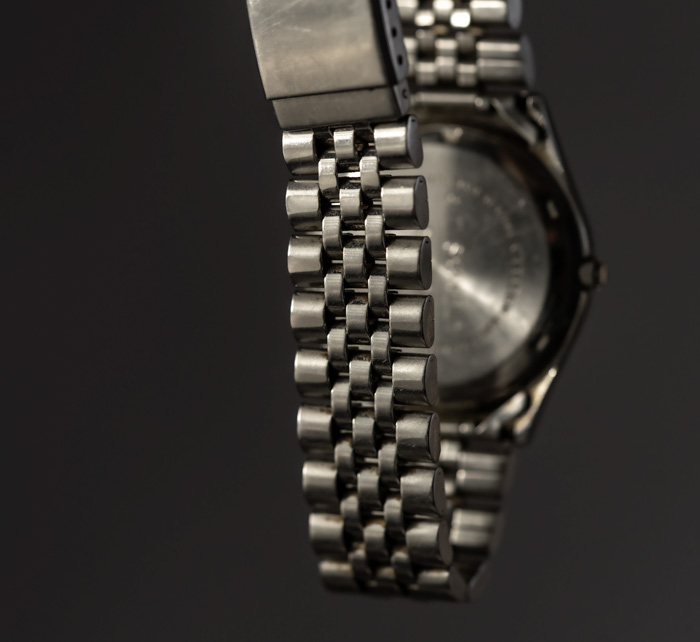
The Jubilee bracelet was first introduced in 1945 for Rolex’s 40th anniversary – it premiered on the Datejust, one of Rolex’s most renowned dress watches. Though it was at first only available in gold, steel and two-tone versions were released soon after. The Jubilee is characterized by three narrow, highly polished links situated between the thick, matte finish side links. The total number of links is identical to that of the President bracelet, but the central portion tends to appear narrower due to its triple-wide construction.
When placed on a watch, the Jubilee draws attention to the center of the watch face, minimizing the footprint on the wrist. The two-tone variations exacerbate this effect, especially when the central links are a different color than the watch case. As such, a Jubilee bracelet (be it of mono- or duo-tone construction) is an excellent choice for large and small watches alike, since it brings out the best qualities in both.
The only true problem with the Jubilee is its propensity towards stretching over long periods of time. Just like the President, the Jubilee’s small links reduce its structural integrity. After a while, the pins holding each link together tend to expand and loosen, gradually extending past the wearer’s true wrist size. Thankfully, modern construction capabilities have fixed many of the structural problems, so the slightly decreased durability is only visible on vintage models. Unless you put it through some serious abuse, you should never have to worry about a Jubilee strap wearing out.
Retailers:
- Otto Frei – $13
- daBeer – $70
- Hadley Roma – $30
- Seiko on Amazon – $63
- Seiko – $53
- StrapCode – $63
- Vollmer – $50
- Strap Boutique – $40
Engineer
Designed to be extremely chunky, Engineer bracelets have a notoriously large wrist presence. Believed to have been created by Seiko, the Engineer is a perfect match for hefty dive watches due to its proportionally sized links. Even though these links are quite large, they are stacked to a width of five total links, so they appear quite visually dense. The links themselves are often cut in a pseudo-hexagonal pattern, which makes them angular in a way that few other bracelets can match.
The sheer size of the Engineer bracelet also causes it to be exceedingly heavy and thick, so you might experience a bit of wrist fatigue when you first start wearing it. Of course, the Engineer does make up for its unwieldy volume with its incredible durability, so it’s an excellent choice for a beater watch.
While its bulky appearance might at first steer small-wristed folk away, one must consider that proportions are more important than physical dimensions. As stated previously, Engineer bracelets have an undeniable wrist presence, but this makes them perfect to pair with large divers like the Seiko Monster. The bracelet itself matches the width of the watch case, so it has a surprisingly low profile when worn on the wrist. The surprisingly small lugs help with this, too, since they are unlikely to hang over the edge of the wrist.
Regardless, the Engineer bracelet can work with any size wrist as long as it remains proportional the watch it is attached to.
Retailers:
- Otto Frei – $21
- Sinaike on Amazon – $35
- Hadley Roma – $27
- Freda – $70
- StrapCode – $73
- Vollmer – $122
Aviator / Pilot
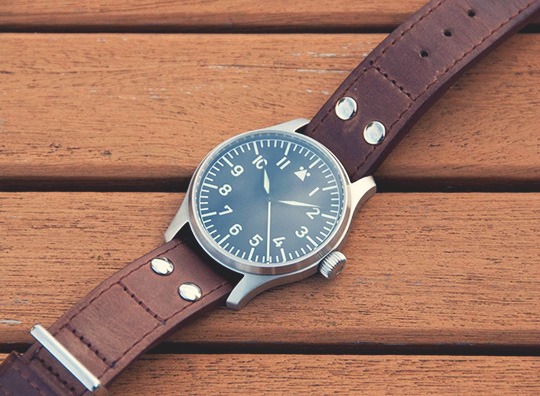
As its name suggests, the Aviator watch strap was popularized by the German air force during World War II. The first iterations were incredibly long so as to fit directly over the pilots’ flight jackets, and one or more rivets were added directly below the lugs to prevent the watches from flying off of their wrists. The watches themselves were also oversized (sometimes upwards of 55mm in diameter) for the sake of clarity in intense situations. Both of these items were greatly reduced in size when they reached the general population, but the basic features remained: the final result is an austere, black watch face with white Arabic numerals, attached to a leather strap with large rivets located below the lugs. While these rivets are now non-functional, they do add an interesting aesthetic flair with a fascinating backstory.
Due to their history in the air force, Aviator straps work best on pilot watches, especially those made by Stowa, IWC, Laco, and Hamilton. The stark contrast between the black dial and brown Aviator strap exudes a particularly militaristic essence, and the rivets act as a subtle detail harkening back to the watches’ original purpose.
This strap also pairs excellently with chronographs, which were introduced to pilots at a later date to help time flight durations. Either way, the Aviator is a beautiful strap that makes for a compelling conversation starter.
Retailers:
- Otto Frei – $8
- Timefactors – $17
- The Strap Shop – $40
- Crown & Buckle – $34
- StrapCode – $60
- Panatime – $55
- Jacobstraps – $97
- Greg Stevens Design – $200
- The StrapSmith – $189
Bund

Like Aviator straps, Bund straps were also invented for German pilots in World War II, albeit for a slightly different reason. The single largest hazard in the event of a plane crash is the ensuing fire, and anything composed primarily of metal would quickly become superheated. Watches are always in direct contact with the skin, so a standard strap would allow the watch to scald the wrist.
Bund straps, on the other hand, are constructed with an extra layer of padding beneath the back of the case, therefore preventing it from burning the wearer. This was also useful in high altitudes where the temperature would drop dramatically, since the extra layer of leather would prohibit the metal from freezing to the skin. One final use of the Bund strap was its ability to absorb perspiration; early watches were not very water resistant, so sweat could easily enter through the case back and destroy the internal mechanisms of the watch. Servicemen led a very active lifestyle, so the Bund strap helped to drastically improve the lifespan of government-issued watches.
It is important to note that Bund straps are not for everyone – they are typically quite warm, which makes them difficult to wear in the summer, and they are often too large for small-wristed folk to wear on a regular basis. Still, they’re an excellent choice for those afflicted with a metal allergy, since they prevent all contact between the watch and the wearer’s skin. If your wrist is large enough to support this strap proportionally, you should give it a try, especially if you own a pilot watch or a chronograph! Remember, though: the Bund’s padding should trace the outline of the watch as closely as possible.
Retailers:
- Eulit – $47
- Timefactors – $18
- Vintage 1946 on Amazon – $40
- StrapCode – $45
- Hamilton Leather Works – $239
Shark Mesh
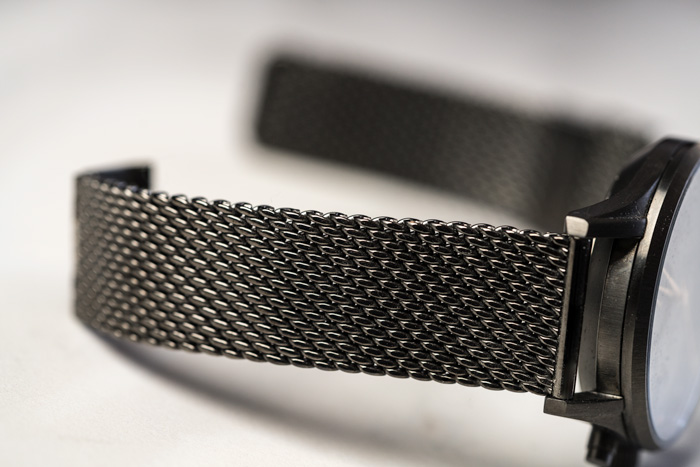
The name of the Shark Mesh bracelet might immediately conjure images of the fierce oceanic predator, but the strap itself has almost no physical relation to the vicious beast. The famous title was derived from a popular advertising campaign launched by Omega for their new ground-breaking dive watch, the Ploprof 600. Intended for professional use, this watch was built to withstand extended operations at extreme depths.
This watch was one of the most rugged and robust divers’ watches ever made, and its strap lives up to the hype. Although it is not literally “shark-proof” as the advertisements claim, it is more durable than a standard bracelet due to the lack of pins between links. Since the entire strap is held together by intertwined loops, there are drastically fewer break points. The loose and chunky chainmail design provides a flexible and snug fit to anyone’s wrist, and the easily removable links allows the wearer to remove all excess material.
While the strap is relatively heavy, it retains a high level of breathability by means of the large gaps between the interwoven links.
The most noticeable feature of the Shark Mesh strap is its comparatively large links. Most other mesh bracelets tend to be tightly woven with small links, but the Shark Mesh is the complete opposite. As such, many people tend to view it as the most comfortable option, since the relaxed nature of the links allows for a smooth drape around the wrist. I recommend pairing this strap with a vintage 1970’s diver, but as long as the proportions are right, you can attach it to just about anything!
Retailers:
- StrapsCo on Amazon – $100
- Strap Boutique – $38
- StrapCode – $100
- Staib – $169
- Vollmer (heavy) – $116
Milanese
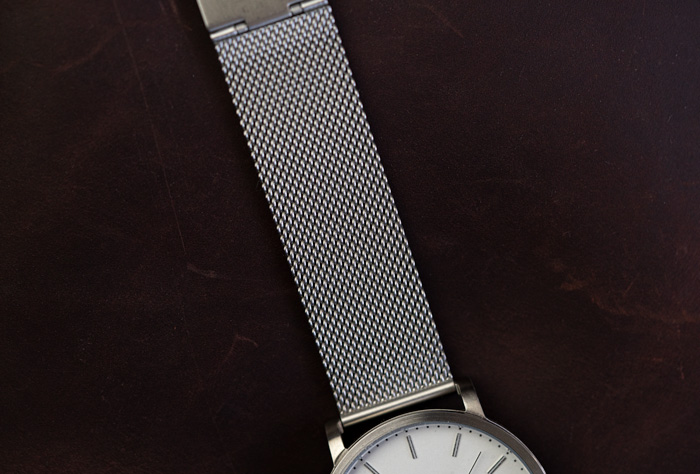
As their name implies, Milanese watch straps were originally developed in Milan, Italy. The Milanese mesh design can be traced all the way back to the 13th century, where it was used as a special kind of chainmail. The manufacturing process was completed entirely by hand, and remained an Italian specialty for over 500 years. Renowned German watch strap specialists Staib and Vollmer renewed production of these rare straps in the early 1920’s, causing a skyrocket in popularity. This demand lasted late into the 60’s, so Milanese straps are a common appearance on vintage dress watches.
The straps themselves are easily distinguished by their extremely dense and tightly woven mesh construction, which makes them some of the smoothest metal straps on the market. This does come at a slight cost to durability, but these straps are frequently worn in more formal environments, so resistance to the elements is less of a concern. Some people also may find that the tightness of the mesh causes a certain degree of rigidity, which might feel a bit less comfortable than looser weaves.
Regardless of these minor problems, Milanese straps are an excellent choice for all-around wear. Although some might view them as somewhat antique, they work just as well with contemporary watches as they do vintage ones. Remember to keep proportions in mind – the extremely thin links might appear disproportionate when worn with a large watch, so I recommend keeping the watch face under 40mm.
Retailers:
- StrapCode – $61
- Rechere on Amazon – $15
- WatchStyle – $50
- Eache on Amazon – $17
- Triwa – $65
- Rechere on Amazon – $15
Tropic
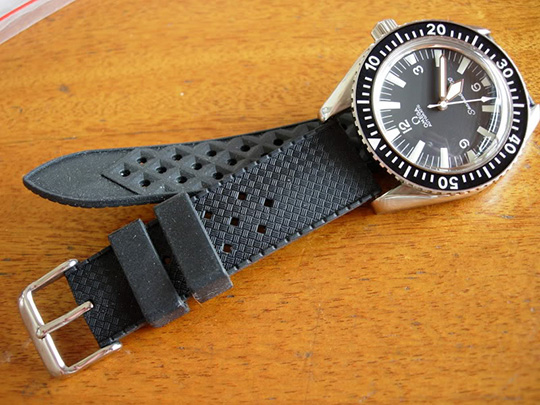
Tropic straps were originally developed in the 60’s as a cheaper alternative to the metal bracelets used on sport-based Rolex and Tudor watches. Metal bracelets were certainly practical for underwater excursions, but they were very heavy and expensive to replace; luckily, rubber straps served as a solution to both of these problems.
The Tropic strap was the first rubber strap ever released, and it quickly began to corner the dive watch market. It was easily recognizable by the characteristic basket weave pattern stamped into the outward-facing side of the strap, in addition to the numerous perforations running lengthwise from tip to lug. This gave the strap a unique texture in addition to a copious amount of breathability, which was unexpected out of a strap built to be waterproof. Early models were somewhat stiff and brittle, but by the 70’s, Tropic straps had been further improved to retain their supple qualities even after years of use.
One of the most amazing features of the Tropic strap was its incredible longevity – even though it was marketed as easily replicable, many models are still in use today (over 40 years later), and they feel and function just like when they were first commissioned. Furthermore, they managed to possess this durability while maintaining a very slim profile, which is rare even for modern variants.
Tropic straps tend to work best on vintage divers due to their shared history, but they also work exceptionally well with contemporary timepieces.
Retailers:
Perlon
Like Tropic straps, Perlon straps were also popularized in the 60’s. Perlon straps are easily recognized by their tightly woven basket weave pattern, which is similar in appearance to the surface of a Tropic strap. Instead of being a stamped pattern, however, it is an actual weave composed of thick nylon-esque threads. This characteristic gives Perlon straps a magnificent three-dimensional texture while simultaneously providing extreme amounts of breathability.
One of the most unique features of the Perlon strap is its infinite resizability – there are no predetermined holes, so the buckle’s prong simply slides through an opening in the weave.
This makes the strap a perfect choice for peculiar wrist sizes, since any circumference can be reached exactly. Perlon is also very abrasion resistant, so it rarely fray from continued use. Finally, Perlon dries quickly and does not stretch when wet, so it is an excellent choice for diving when rubber is unavailable or unwanted.
Perlon straps were invented in Europe, and they never quite managed to cross into American culture. As a result, very few continental retailers offer these straps, so you might have to look into international sellers to find specific colors and styles. Perlon straps peaked in popularity in the 60’s and 70’s, so they tend to look best on vintage divers.
Regardless of their original purpose, they work beautifully with all manner of watches, from chronographs to dress watches. Their extreme breathability and durability makes them a summer favorite, and their cheap price makes them easy to invest in – I highly recommend picking up a few of them!
Retailers:
- Crown & Buckle – $16
- Otto Frei – $6
- Alles voor Horloges – $7
- HNS on Amazon – $15
- WatchObsession – $16
- Davis on Amazon – $40
Waffle
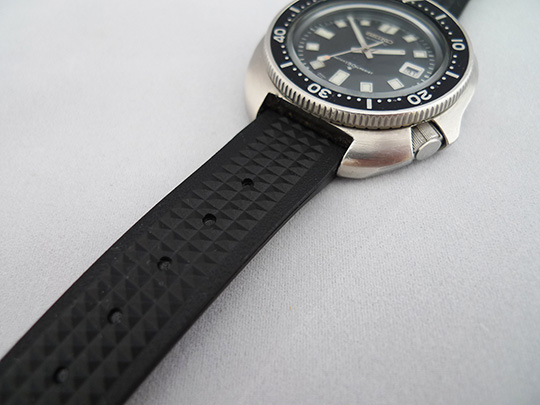
Premiering on the 6105 Diver in the early 70’s, the Waffle strap is an iconic Seiko invention. This watch is widely regarded as the single most important diver in the company’s history, and was a common choice for Vietnam servicemen. While the original army-issued watches failed in the humid jungles, the Seiko 6105’s kept ticking long after the end of the war. As veterans returned to the U.S., their watches went with them, and they quickly rose in popularity among civilian circles.
The characteristic Waffle strap, obviously named for its distinct texture, adorned a majority of these watches, and was loved by many. Numerous small vents ran down the sides of the strap, which greatly increased its breathability. Since it was composed of rubber, it was entirely waterproof and easily cleanable, and also quite flexible to boot. Sadly, most vintage straps are now hardened and brittle, so many enthusiasts have turned to replicas and homages.
Obviously, the Waffle strap looks best on a vintage Seiko, but that’s a pretty tall order. These watches (and their accompanying straps) are no longer in production, so they are ludicrously overpriced for any non-collector. Even so, comparatively inexpensive 1:1 reproductions have been made by multiple retailers, so if you’re looking for a historic Seiko experience, I highly recommend trying one out.
Retailers:
- StrapsCo – $20
- UncleSeiko – $40
- Strap Boutique – $40
Finally, there are two more rarely seen straps that I will quickly gloss over:
Double Ridge
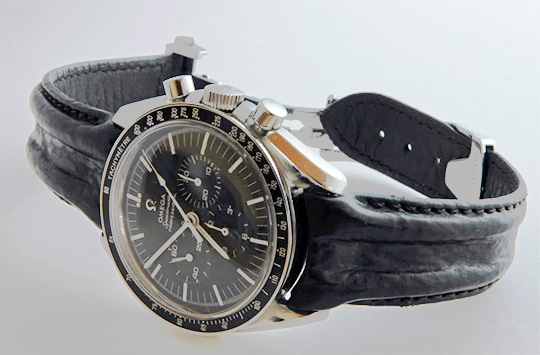
Retailers:
NASA
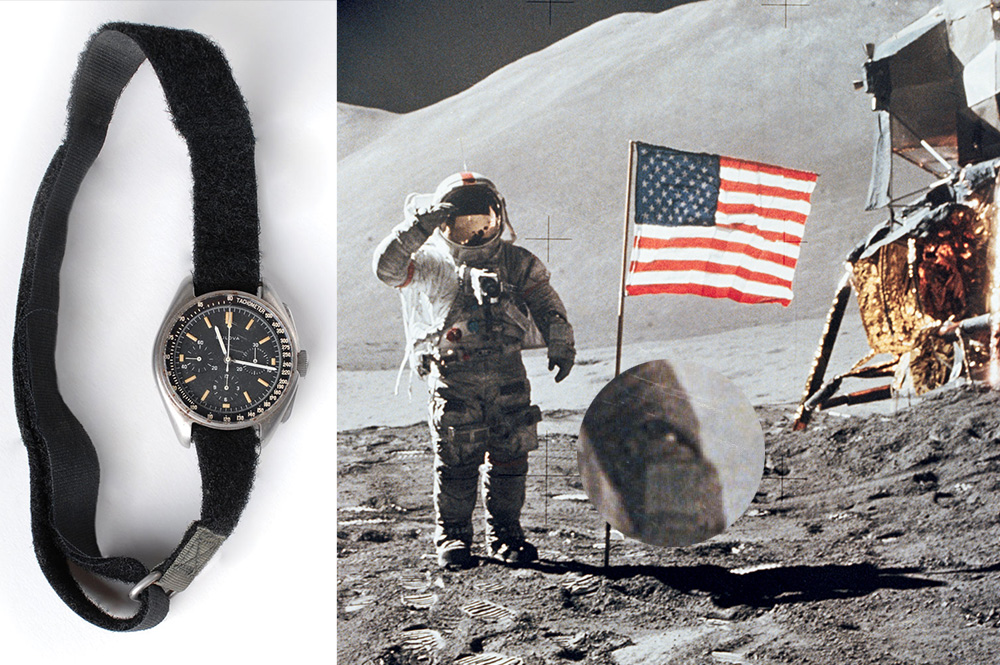
This long velcro strap was provided to the Apollo astronauts to wear with their Omega Speedmasters on the outside of their spacesuit.
Retailers:
- Etsy – $35
- Otto Frei – $5
- Luna Replicas – $30
- Joseph Bonnie – $85



